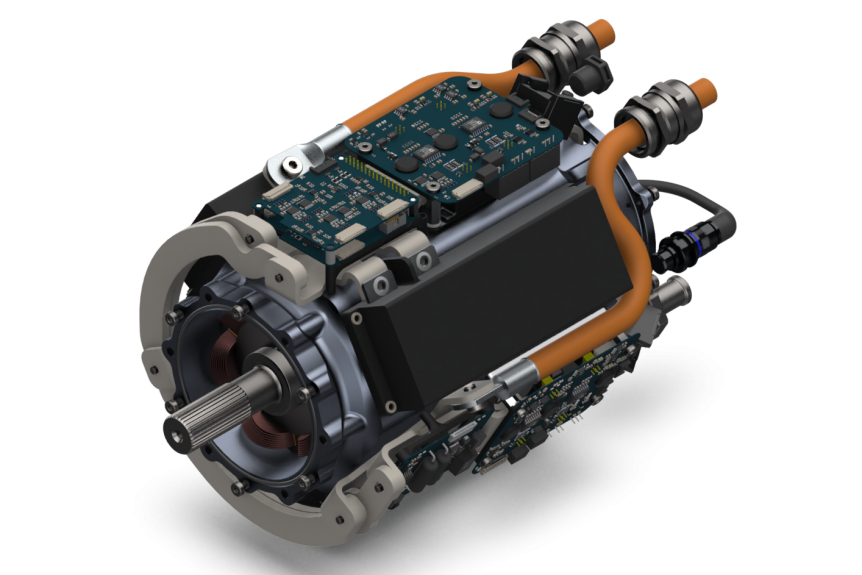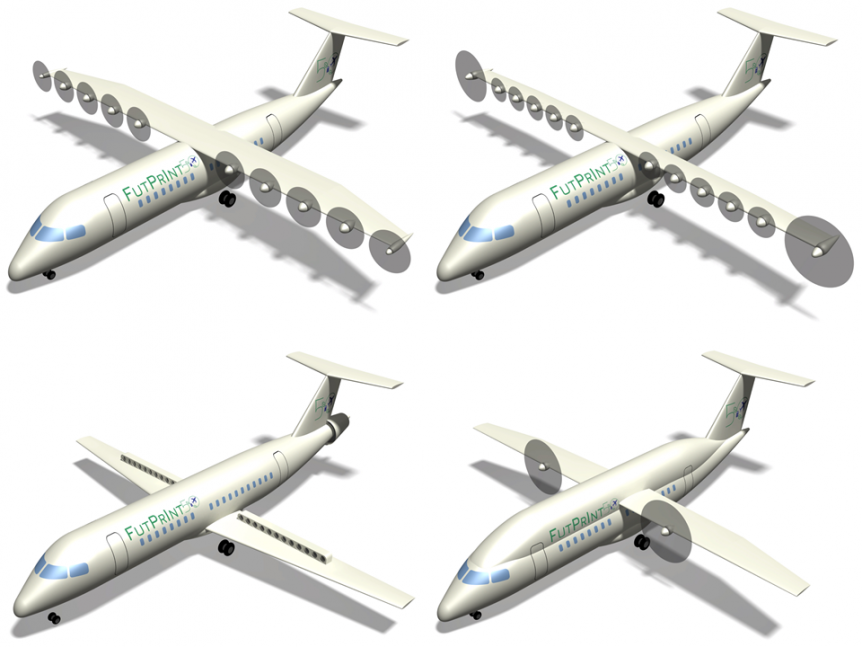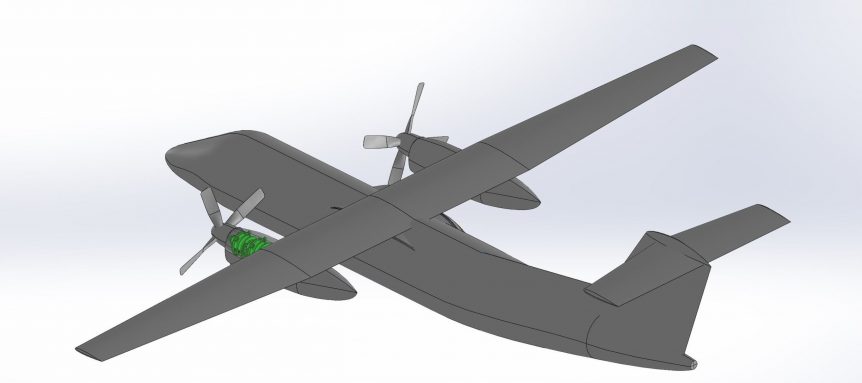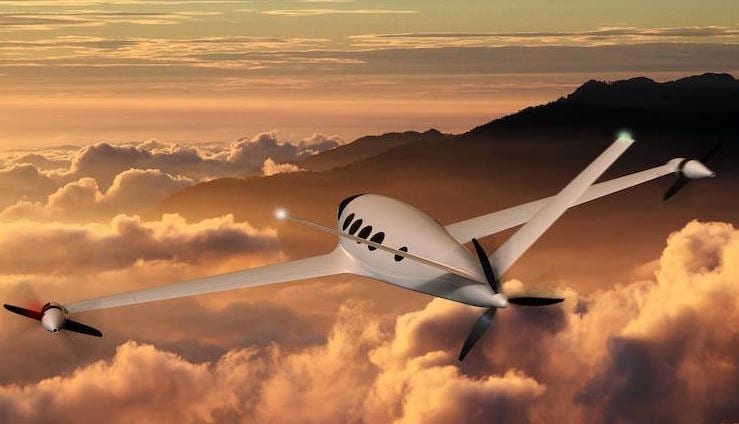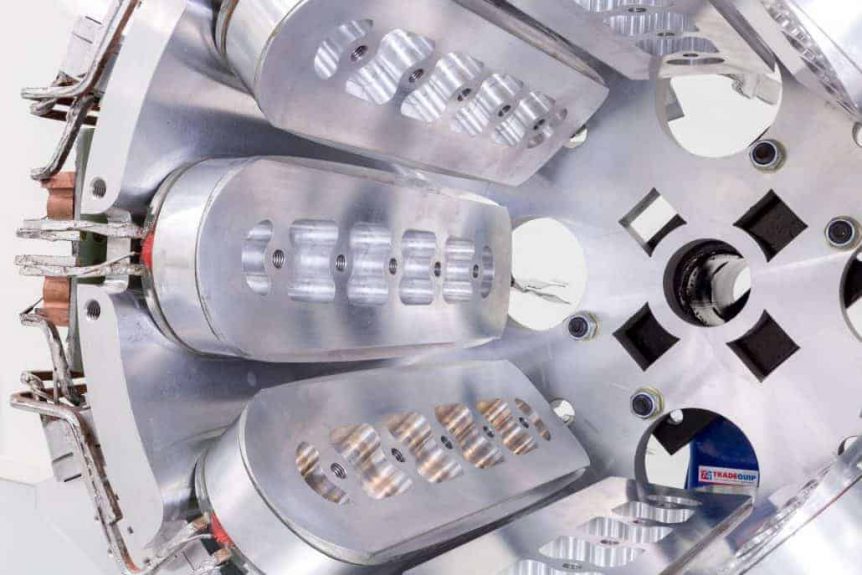H3X is shaking things up with its announcement of its HPDM-3000, a three megawatt motor. Thirteen years ago, your editor gave his first presentation at an electric aircraft symposium, held that year in the Hiller Aviation Museum in San Carlos, California. Dr. Brien Seeley, founder and then head of the CAFE (Comparative Aircraft Flight Efficiency) Foundation, had asked for research on motors of 100 kilowatts or more. It was hard to find units of over 50 kW at that time, but people like Roman Susnik were managing ultralight motors of over 100 kW for motorized sailplanes With competitors like MagniX and ZeroAvia in the game, H3X introduces the HPDM-3000, a 2.8 mW (3,753 horsepower) ultra-high power density integrated modular motor drive (IMMD). Developed by a group of young graduates of the University of Wisconsin at Madison, H3X’s motors combine extreme lightness for the power produced with cutting edge manufacturing techniques. In this video, Chief Technology Officer Max Liben explains the …
H3X – A Motor with High Power Density
H3X, a motor company started by three University of Madison, Wisconsin graduates, promotes its integrated motor/inverter power plant as “the next step in the evolution of electric propulsion technology.” With Their HPDM-250’s 13-kilowatt-per-kilogram continuous power ability, it meets ARPA-E’s (Advanced Research Projects Agency–Energy’s) criteria for powering large, 737-type aircraft. Electronics Weekly reports, “ARPA-E has determined that for a Boeing 737 to complete a typical five hour flight, the propulsion system must be >12 kW/kg continuous.” H3X adds, “These specifications are estimates based on electromagnetic thermal and structural simulations. Data from dynamometer will be available Q2 2021.” Their motor is roughly twice as power dense as MagniX motors of similar power, according to H3X. Weight reduction is an intrinsic part of aircraft design. In the days of internal combustion engines (still very much with us), conventional wisdom held that reducing power plant weight by one pound could help take two pounds off the airframe. Even today, ICE engines generally produce only …
DLR’s Novel Configurations
Researchers from the German Aerospace Center (Deutsches Zentrum für Luft- und Raumfahrt; DLR) conducting research into the potential of new types of design have crafted novel configurations for future flight. The DRL and BDLI (German Aerospace Industries Association or Bundesverband der Deutschen Luft- und Raumfahrtindustrie) have published a white paper: “Zero Emission Aviation – Emissionsfreies Fliegen” explicating these configurations. Surprisingly, one of their major findings is that “Electric flight enables lighter aircraft with smaller wings and distributed propulsion systems.” Battery weight has caused MagniX and Ampaire to reduce the number of passengers or the cargo loads on conversions of existing airframes. To counter those issues, “An EU research project is investigating the potential for new propulsion systems and aircraft concepts.” Obviously, these new concepts will need to take advantage of advanced materials to lower airframe weight. Hybrids and Hydrogen Thousands of airliners parked in dry desert locations highlight how the COVID crisis has affected air travel. Despite the ongoing interlude …
A Dash of Hydrogen
Getting the Parts Free, Charged for Refills What if future flight had a simple “return the old fuel container and get a new one” business model? Paul Eremenko, founder of California startup Universal Hydrogen, wants to try it out in a Dash 8 airliner equipped with two 2-megawatt motors supplied by MagniX. Poor analogy perhaps, but in his boyhood, your editor had a camera that was sold at the store complete with a roll of film already inside. All you had to do when you took all your pictures was send it by mail, with a check or money order, and a week later, you got the reloaded camera back with the prints and negatives of your pictures. This klunky, pre-digital plan carried over from Kodak’s version 100 years before. Today, with digital photography having supplanted those earlier, more tedious processes, we save on postage and wasted photos. Let’s face it – we all like rapid rewards and instant gratification. …
Eviation Alice to Paris Air Show, U. S. Certification
Eviation is an Israeli aircraft company which believes in giving its customers a choice. About to be shown at the Paris Air Show in July, Eviation’s Alice will be offered with either Siemens motors or MagniX units. Air show visitors will see the craft with three Magnix 250 motors producing 375-horsepower each. Roei Ganzarski, MagniX CEO says “They’re going to have a fully functioning aircraft, their first of type, at the Paris Air Show. Our propulsion system is going to be on it.” Eviation’s nine-seat Alice is a bit of a trip through the looking glass, looking like a futurist’s dream machine. The modern tri-motor features such light construction that it can carry three tons of batteries to provide 650 mile range. Ganzarski explains, “That means you can easily do Seattle-San Francisco or other significant-range flights. It’s a real long-range commuter aircraft.” Why Two Different Motors? Only a few months after announcing its use of Siemens motors on its Alice, …
MagniX, an Australian High-Power and Torque-Dense Motor
A new motor from Australia, the MagniX Magni5, promises 300 kilowatts (402 horsepower) from a 53-kilogram (116.6-pound) package, or about five kW per kilogram. This is competitive with other power-dense permanent magnet motors. The Magni5 claims an absolutely flat torque curve (more a line, really) from zero to 2,500 rpm, producing 1,000 Newton-meters (737.5 foot-pounds) throughout its revolution range. This is a great deal like steam locomotive performance. Its 444 millimeter (17.5 inches) diameter and 275 mm (10.8 inches) size is perfect to hide behind a propeller spinner. The torque should guarantee a good rate of climb, and might be a worthy candidate for powering a Pikes Peak International Hill Climb contender. The company certainly seems to be on track for designing around aircraft use, promoting their expertise and that of partners with a “Strong background in [the] FAA certification process.” MagniX claims, “The magni5 uses a combination of advanced electromagnetic designs and materials, optimized motor topology, and a proprietary …


